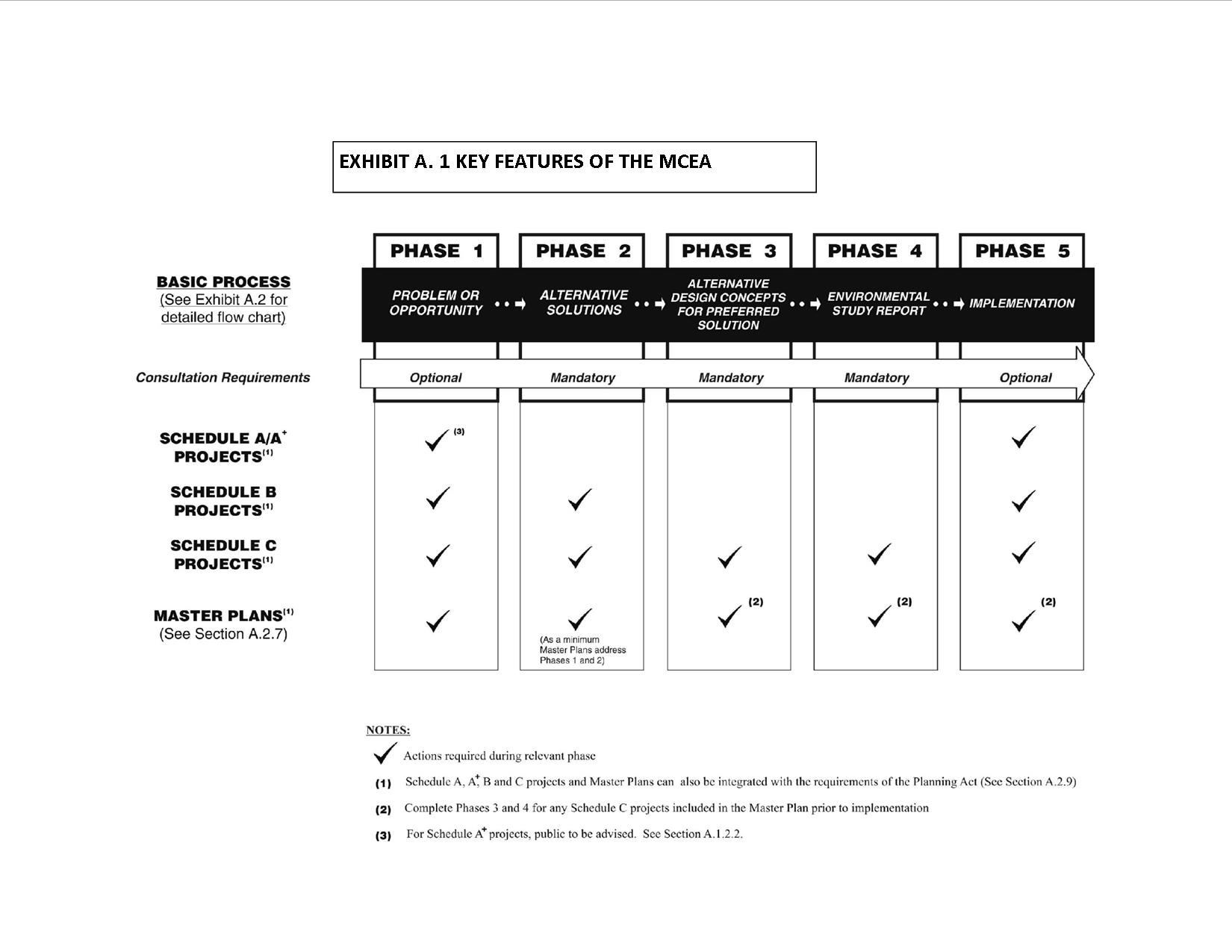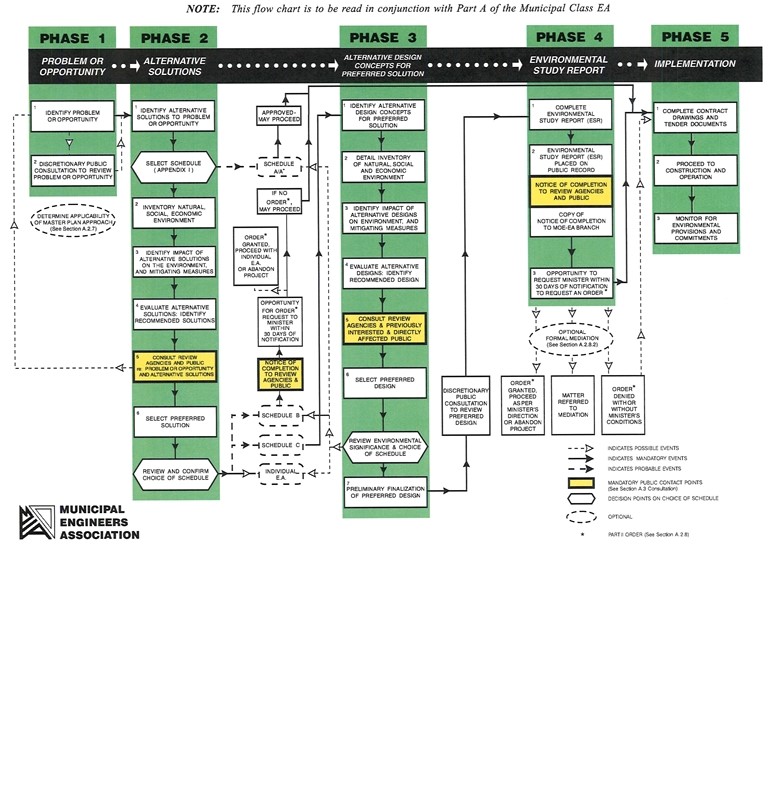Municipal Class Environmental Assessment
Part A - Class EA Planning ProcessA.2 PLANNING AND DESIGN PROCESS
A.2.1 FIVE PHASE CLASS EA PLANNING PROCESSA.2.1 FIVE PHASE CLASS EA PLANNING PROCESS
A.2.1 - Exhibit A.1 - KEY FEATURES OF THE MUNICIPAL CLASS EA

A.2.1 - Exhibit A.2 - MUNICIPAL CLASS EA PLANNING AND DESIGN PROCESS

A.2.1.1 Level of Complexity
|
The process is flexible to meet the specific needs of a project |
|
|
Determination of level of complexity is an inherent function of the management of a project. |
|
| The foregoing should be considered not only at the outset of project planning but as one proceeds through the process and reviews and confirms the project schedule.
|